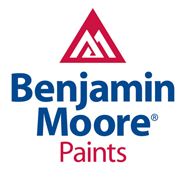A Guide for Property Managers and Business Owners
The appearance of your commercial property is a direct reflection of your business. A clean, professional, and well-maintained exterior and interior sends a powerful message to clients, customers, and employees. But achieving that look requires more than just a can of paint; it requires a partnership with a skilled, reliable, and experienced commercial painting contractor. For businesses in Tinton Falls and across New Jersey, vetting and selecting the right team is a critical decision that impacts your timeline, budget, and final results.
Key Qualities to Look for in a Commercial Painter
Not all painting companies are equipped for the unique demands of commercial projects. Here are the non-negotiable qualities your chosen contractor should possess.
Proven Experience and Specialization
A contractor’s portfolio should demonstrate a wide range of experience. Look for a company that has handled projects similar to yours, whether it’s an industrial facility, a supermarket, an office building, or an institutional property. True commercial painting contractors like Spectra Painting have a track record dating back decades, proving their ability to handle complex jobs and deliver consistent quality. They understand the nuances of working in different commercial environments and can adapt their approach accordingly.
Proper Licensing and Comprehensive Insurance
This is paramount for protecting your business. A professional contractor must carry valid liability insurance and worker’s compensation. This protects you from any liability in the event of an accident on your property. Always ask for proof of insurance and verify that their licenses are current for work in New Jersey. Working with an uninsured painter is a significant financial risk you can’t afford to take.
Detailed, Transparent Proposals
A vague, one-line quote is a red flag. A reputable contractor will provide a detailed proposal that breaks down the entire project. This should include the scope of work, surface preparation methods, the specific types and brands of primers and paints to be used, the number of coats, and a clear cost breakdown for labor and materials. This transparency ensures there are no surprises and that both parties have the same expectations.
Beyond the Brush: Specialized Services That Make a Difference
Top-tier commercial painters offer more than just standard painting. Their expertise often extends to advanced surface treatments and specialized coatings that protect your investment and provide a superior, long-lasting finish.
Superior Surface Preparation with Sandblasting
The longevity of any paint job depends entirely on the quality of the surface preparation. For metal surfaces, concrete, and other industrial materials, sandblasting is the gold standard. This process removes old paint, rust, and contaminants, creating an ideal profile for new coatings to adhere to. A contractor offering mobile sandblasting brings the equipment to your Tinton Falls site, ensuring the foundation for your project is flawless.
A Factory Finish with Electrostatic Painting
For metal fixtures like lockers, railings, elevators, and machinery, electrostatic painting is an incredibly efficient and effective technique. The process uses a positive electrical charge in the paint and a negative charge on the metal surface, causing the paint to wrap around the object for a perfectly uniform, durable finish with minimal overspray. This is ideal for projects requiring a quick turnaround with a clean, factory-like appearance.
Preserving Our Past: Historic Restoration
Painting a historic building requires a delicate touch and deep knowledge of period-appropriate materials and techniques. Contractors with experience in historic restoration painting often work with conservators to ensure every detail is authentic. This specialized skill is crucial for preserving the architectural integrity of New Jersey’s treasured properties.
Did You Know?
The color of a commercial space can directly impact productivity and customer perception. For example, blue shades can create a sense of calm and productivity in an office, while vibrant colors like red can stimulate appetite in a restaurant setting. A professional painting contractor can provide color consultations to help you choose the best palette for your business goals.
The Right Partner for Your New Jersey Business
Choosing a commercial painting contractor based in or near Tinton Falls offers significant advantages. A local company understands the specific environmental factors in New Jersey, from humid summers to cold winters, and can recommend coatings that will withstand the local climate. They are also more accessible for site visits, communication, and follow-up, ensuring your project stays on track. With a reputation built in the community since 1989, Spectra Painting combines deep local knowledge with a commitment to excellence on every commercial, industrial, and even residential painting project.
Ready to Elevate Your Commercial Property?
Don’t leave your property’s appearance to chance. Partner with a trusted, professional commercial painting contractor that has served New Jersey for over three decades. Contact Spectra Painting for a detailed, no-obligation quote.
Frequently Asked Questions
What kind of insurance should a commercial painting contractor have?
A reputable contractor must carry both General Liability insurance to cover property damage and Worker’s Compensation insurance to cover their employees in case of injury. Request a Certificate of Insurance (COI) before any work begins.
Can you work after business hours to avoid disrupting my operations?
Yes, experienced commercial painters understand the need to minimize disruption. Companies like Spectra Painting offer flexible scheduling, including nights, weekends, and holidays, to ensure your business continues to run smoothly during the project.
How long will my commercial painting project take?
The timeline depends on the project’s size, the scope of work, the extent of surface preparation needed, and weather conditions for exterior jobs. A professional contractor will provide a detailed schedule in their proposal so you know exactly what to expect.
What is the difference between commercial and residential painting?
While both require skill, commercial projects often involve larger-scale operations, specialized equipment (like aerial lifts), durable, high-traffic coatings, and strict adherence to safety regulations and tight deadlines. Commercial contractors are equipped to handle these unique demands.






